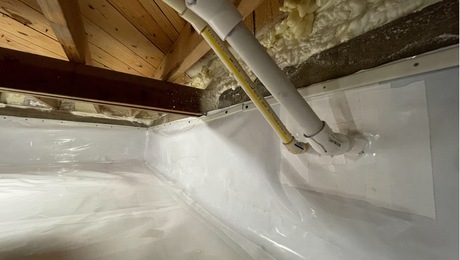Insulating and air sealing an old garage with no sheathing, using only foambard?
I am trying to weatherize a detached garage into a year-round wood shop. It has just siding nailed to the studs, no sheathing. So, I have taken a cue from articles here on the site and will be creating a 7/8”-1” air gap behind the siding with cleats attached to the studs and will be using rigid foamboard pressed against this and spray foamed and taped to create the air seal.
The articles tend to suggest using a layer of rigid foamboard, and furring out the studs to create more depth for batt insulation, such as mineral wool or fiberglass. My question is whether it would be a mistake to follow the same concept, but instead of adding batt insulation, simply using a solid layer (or multiple layers) of rigid foam insulation, such as 3” total of XPS foamboard. It seems to me that this still creates the air gap and the air/draft sealing, while also achieving the recommended r value of insulation. It also minimizes the depth of any needed furring strips and completes the work in one less step.
At first, I was dismissing this idea because I didn’t like the idea of using that much foamboard (environmental concerns and cost). But, when I compared the cost of using 3” of XPS versus 1” of XPS with mineral wool batts (my choice for batt insulation for various reasons), the difference in cost is minimal, at least in my area (northern Vermont). And it seems that the difference in labor and time is significant – with 3” rigid foam, the process is done in basically one step, notwithstanding some smaller furring strips (my studs are full 4”, so I will be able to get away with just ¼” to almost nothing, depending on variations in the materials. )
It still allows the siding to breath and it achieves air sealing and insulation of the walls up to recommended r values. Other than the environmental impacts of foam board vs batt insulation, am I missing something?
GBA Detail Library
A collection of one thousand construction details organized by climate and house part









Replies
J_Ket,
Sounds like you are basically talking about "cut and cobble" with XPS?
https://www.greenbuildingadvisor.com/article/cut-and-cobble-insulation
If so, you shouldn't have any problems. You might look into using polyiso instead; you'll get a little more R-value for the space, and it's got a lower environmental cost than XPS.
Thanks for your response and the link. Glad to know the basic plan should work and that I'm not reinventing the wheel.
My plan was to use the Great Stuff, fire blocking foam, high expansion foam, as I'm familiar with it from other projects and I already have the gun. But the article suggests spray foam might not air seal well, especially over time. I'm just wondering how big a concern this is? And would adding Zip Tape on top of the seams be a good backup, or would that just be more of a waste of material?
Oh, and thanks for the suggestion about polyiso. I will consider it. Thanks again for your insights. Much appreciated.
Cut and cobble insulation is "good enough" for walls, but it's a pretty risky assembly with a roof. I think the main issue is that if things move over time, the canned spray foam could pull away from the framing, leaving a path for warm air to migrate through the assembly and hit the cold sheathing on the underside of your roof. More likely to happen with cut and cobble, which is only partially adhered to framing & sheathing, than with a full none-vented spray foam assembly. (I might be incorrect on this; hopefully one of the many, much smarter people on this site will chime in)
As long as you're only insulating the walls, you should be fine.
From what I understand, having redundant air barriers isn't a bad thing, so taping seams won't hurt and may help. Though it does sound like a pretty labor-intensive process.
Thanks for that further clarification about using spray foam. And yeah, I am torn on whether to use the tape as well. The plan is definitely to tape the spots between the factory edges of the sheets of foam board that are too tight to spray into. But I'm still unsure it's worth the extra effort, and cost, to tape all the other seams as well. Still pondering. Might see how I feel once I start. Thanks again for you input and info.
J-Ket,
What are you planning to use on the interior?
Hi Malcom,
I'm planning on 5/8" drywall, in part because I think that's what my local fire code suggests with the foam. Also, I've spent too long surrounded by dark and dusty OSB walls. I'd be open to entertaining other options, though, if you have suggestions. Thanks for reaching out.
J-Ket,
If you are covering the walls with drywall it will act as an air-barrier for the wall cavities and I wouldn't worry about sealing or taping the foam. The only weak spots will be at the sill-plate and around openings - which if you are inclined you can tape before trimming.